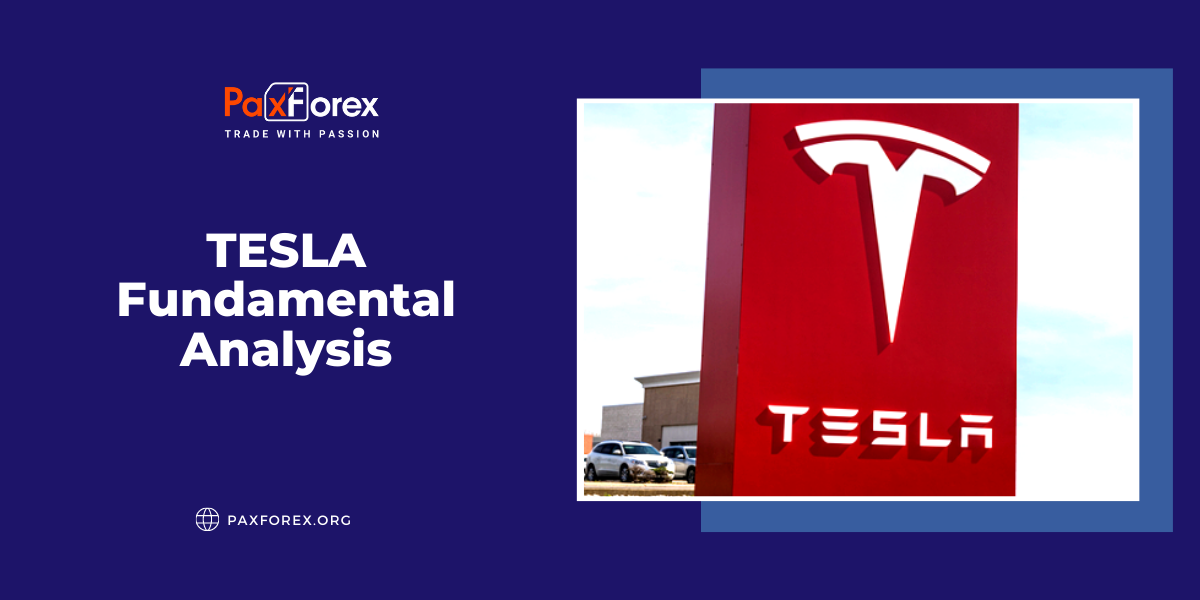
Source: PaxForex Premium Analytics Portal, Fundamental Insight
Some businesses are noteworthy for their revolutionary impact and the disruption they have caused, and Tesla is often cited as a prime example of such industry trailblazers.
Tesla, a leading electric vehicle (EV) manufacturer, has provided significant returns for investors, with its stock increasing by 1,100% over the past decade. However, with Tesla’s share price currently down 49% from its all-time high, the idea of investing in the company during this dip might be appealing.
Despite Tesla's innovative edge, there are several reasons why adding it to a portfolio might not be advisable at this time.
First, Tesla's financial performance has been underwhelming. The days of remarkable growth are behind it. Recent results show a modest single-digit year-over-year sales increase in the latter half of 2023, with revenue dropping nearly 9% in the first quarter of the year and rising only 2.3% in the second quarter. The company’s financial results now resemble those of a conventional car manufacturer rather than a high-growth tech company. This shift is attributed to the challenging macroeconomic environment, where higher interest rates have reduced consumer spending on expensive EVs.
Competition in the EV market is also intensifying. Tesla faces increasing competition from both domestic and international rivals, compelling it to lower vehicle prices and, consequently, erode profit margins. Although Tesla’s stock surge can be partly linked to its successful EV operations—such as the Model Y becoming the best-selling car globally in 2023—the market’s enthusiasm also stems from speculative future prospects. Whether Tesla will become a leading battery producer, a robotics manufacturer, or a global operator of robotaxis remains uncertain.
Elon Musk’s visionary leadership is well-recognized, but his track record of overpromising and underdelivering on product timelines poses risks for long-term investors. The stock’s high valuation reflects not only the company’s current achievements but also market speculation about its future potential. In November 2021, Tesla's price-to-earnings (P/E) ratio peaked near 400, and despite a drop to a P/E ratio of 60, it still appears relatively expensive.
Investors considering Tesla should be confident in the company’s ability to return to strong revenue growth and margin expansion. Given the fierce competition and reduced consumer interest in EVs, a cautious outlook is warranted. Additionally, the uncertainty surrounding Musk’s ambitious plans for robotaxis further complicates the investment decision.
While Tesla’s accomplishments are impressive, there are significant reasons to approach the stock with caution.
As long as the price remains above the support level of 205.00, follow the recommendations below:
- Time frame: D1
- Recommendation: long position
- Entry point: 219.46
- Take Profit 1: 235.00
- Take Profit 2: 245.00
Alternative scenario:
If the price breaks below the 205.00 support level, follow the recommendations below:
- Time frame: D1
- Recommendation: short position
- Entry point: 205.00
- Take Profit 1: 190.00
- Take Profit 2: 180.00













